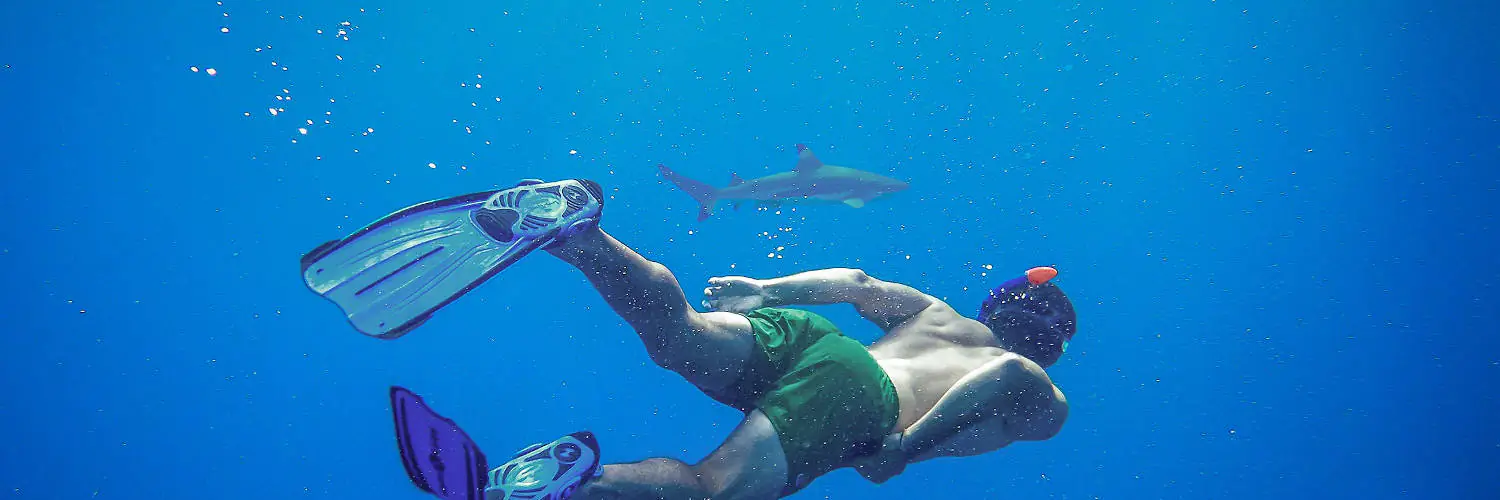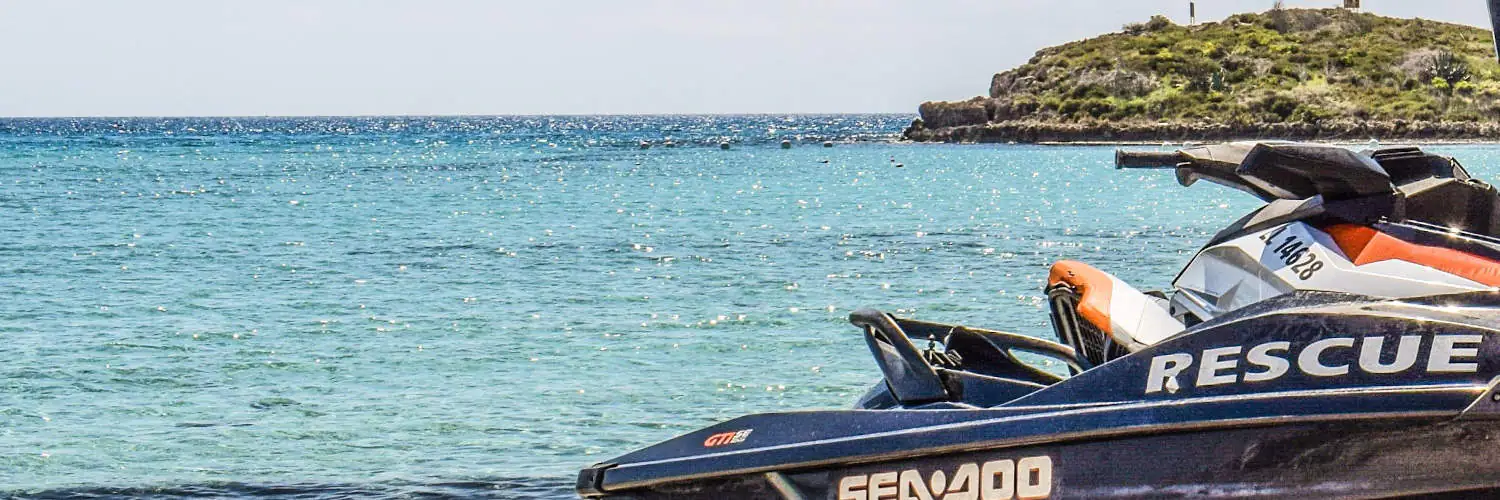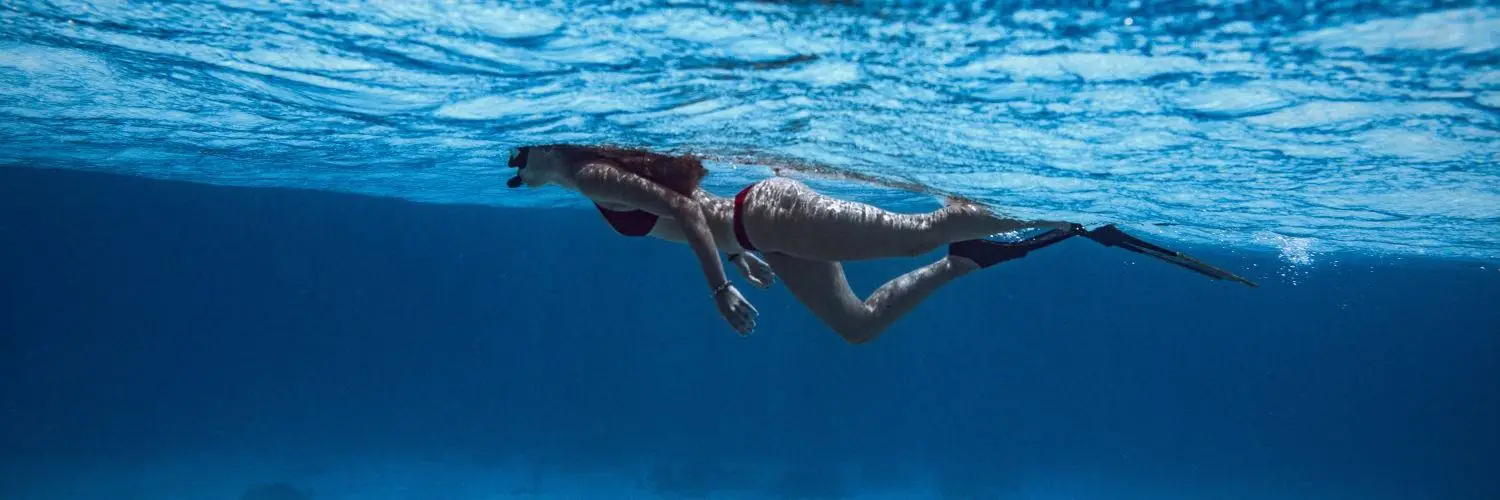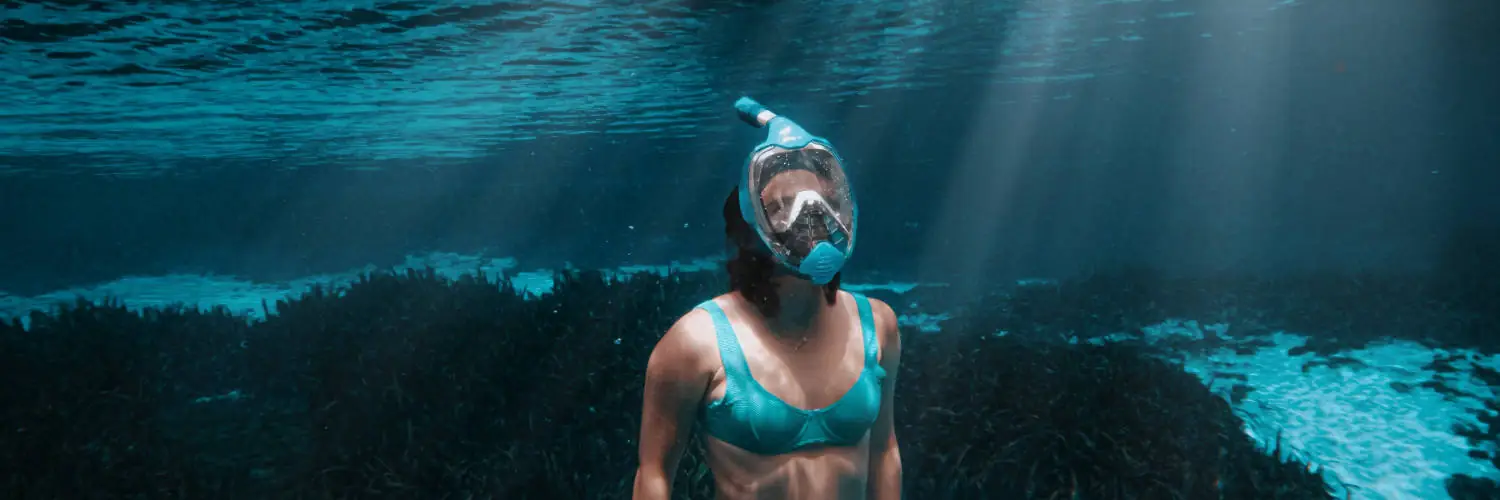Snorkeling is an accessible and fascinating way to explore underwater worlds. Swimmers don a mask and a breathing tube called a snorkel to observe marine life in shallow waters without the need for the complex equipment and training required for scuba diving. To enhance the experience and ensure safety, familiarizing oneself with snorkeling vocabulary is essential. It helps individuals communicate effectively about gear, techniques, and the aquatic environment, adding to the enjoyment and understanding of the activity.
The vocabulary of snorkeling includes terms like ‘snorkel breather’, which refers to the apparatus allowing swimmers to breathe while face down on the water’s surface. Understanding the nuances of snorkeling lingo can significantly impact a swimmer’s performance. For instance, knowing the distinction between a ‘flotation device’ used for added buoyancy and ‘fins’ that improve propulsion through the water is crucial. Additionally, awareness of different water-related terms such as ‘tide pool’ or ‘sandbar’ can enhance a snorkeler’s appreciation and comprehension of the diverse habitats they explore.
Proper breathing techniques form a core aspect of snorkeling, and the vocabulary around this is equally important. The guidance to breathe deeply and slowly not only conserves air but also aids in keeping the heart rate down, fostering a calmer and more relaxed exploration. Each term in snorkeling, from the types of gear to the marine features encountered, contributes to a richer, more informed snorkeling adventure.
Table of Contents
Essential Snorkeling Gear
When planning a snorkeling adventure, understanding the different types of essential gear and their functions enhances both safety and enjoyment. High-quality snorkeling equipment that fits well is crucial for a comfortable underwater experience.
Snorkel Types
- Classic Snorkel: A simple tube design with no special valves, it requires the snorkeler to clear water out by exhaling sharply.
- Dry Snorkel: Features a mechanism that seals the tube’s top when submerged to prevent water from entering, ideal for beginners.
- Semi-Dry Snorkel: Has a splash guard to reduce water entry but doesn’t seal completely on submersion.
Masks and Fins
- Diving Masks: Must have a snug fit to prevent water leakage, with tempered glass lenses for durability and clear vision.
- Mask Straps: Should be adjustable for comfort and to ensure a proper seal.
- Fins (Swimfins or Flippers): Come in varying lengths and stiffness; longer fins offer more propulsion while shorter fins provide ease of movement and are better for casual snorkeling.
Additional Accessories
- Wetsuits: Recommended for colder waters; they provide warmth and protection from the sun and marine life.
- Rash Guards: Offer sun protection and prevent chafing from gear.
- Life Jackets: For those not confident in their swimming abilities, a snorkeling vest can provide added buoyancy.
Each item in this essential snorkeling gear list serves a unique purpose to facilitate the snorkeling experience. It’s important to choose a mask that fits comfortably and provides a clear view, a snorkel that suits one’s level of expertise, and fins that match the desired swimming effort and comfort. Additional accessories like wetsuits and rash guards can provide protection, while life jackets can offer an extra sense of security for new snorkelers.
Preparation and Safety
In snorkeling, preparation and safety are paramount, encompassing the understanding of marine conditions and adherence to snorkeling best practices to ensure an enjoyable experience with minimized risks.
Understanding Currents and Weather
One crucial aspect of preparation is being aware of the currents and weather conditions before entering the water. Currents can be powerful and unpredictable, so it’s vital for snorkelers to check local weather reports and sea conditions, including tide charts and current forecasts.
- Currents: Recognizing the direction and strength of the current can help prevent exhaustion and reduce the risk of being swept away from shore or into hazardous areas.
- Weather: Unstable weather can rapidly change water conditions. Snorkelers should avoid the water during storms, as these can increase the risk of strong currents and diminished visibility.
Safety Tips:
- Consult with a lifeguard or local guide.
- Observe the water from the shore to spot patterns in wave and current movements.
Safety Guidelines and Tips
Safety gear and knowledgeable practices are essential to a snorkeler’s well-being. Here are critical safety guidelines and tips:
- Life Jackets: Especially for less-confident swimmers, wearing a life jacket or a snorkeling vest can provide buoyancy and peace of mind.
- Sun Protection: Wearing a rashguard, applying waterproof sunscreen to exposed skin, and using UV protection equipment are important to prevent sunburn.
- Snorkeling Skills: Beginners should acquire basic skills in a swimming pool or calm, shallow water before venturing into deeper areas.
- Special Training:
- Learn how to clear water from your snorkel.
- Understand how to equalize ear pressure.
Safety Checklist:
| Equipment | Check for |
|---|---|
| Snorkel and Mask | Proper fit, no cracks, and a clear field of vision. |
| Fins | Correct size and comfortable for extended use. |
| Rashguard/Sunscreen | High UV protection and applied to all exposed areas. |
| Life Jacket | Adequate buoyancy for the individual’s weight. |
Practical Tips:
- Always snorkel with a buddy.
- Use a dive flag to alert boats if snorkeling near boating areas.
- Stay hydrated but avoid alcohol before snorkeling.
- Rest after eating before getting into the water.
By paying careful attention to these preparation and safety tactics, snorkelers can enjoy the underwater world with confidence and security.
Underwater Explorations
Snorkeling offers an immersive way to observe marine life and hone underwater swimming skills. It bridges the gap between the surface and the depths, allowing snorkelers to explore coral reefs and marine animals in their natural habitat.
Marine Life Observation
Snorkelers have the unique opportunity to witness the diversity of underwater life in its natural setting. They can float above reefs bustling with activity or observe fish as they navigate the maze of corals. This privilege comes with responsibility:
- Respect: Keeping a safe distance to avoid damaging the delicate coral reefs.
- Identification: Learning to recognize various marine animals, which enhances the snorkeling experience.
Snorkeling Techniques and Skills
Effective snorkeling requires a combination of skills for safety and enjoyment:
- Breathing: Mastering calm, steady breathing through the snorkel.
- Vision: Utilizing prescription snorkel masks, if needed, for clear underwater vision.
- Floating: Managing buoyancy to remain comfortably at the surface while observing submerged rocks and wildlife.
Key techniques include:
- Finning: A method of underwater swimming that conserves energy and minimizes disturbance to marine life.
- Clearing Water: Learning to expel water from the snorkel after submersion.
Each skill contributes to a snorkeler’s ability to explore the underwater realm with respect for the environment.
Top Snorkeling Destinations
In selecting top snorkeling destinations, one typically looks for clarity of water, vibrant ecosystems, and unique underwater landscapes. These spots offer exceptional conditions for observing marine life and natural beauty.
Beach and Island Spots
- Loreto, Mexico: Often referred to as the world’s aquarium, Loreto’s waters have a rich biodiversity perfect for snorkeling along the coast.
- Ambergris Caye, Belize: Home to the second largest barrier reef, snorkelers can explore vast marine life and clear, warm waters by the shore.
- Grenada, Caribbean: Here, the underwater sculpture park offers a unique snorkeling experience beside its beaches.
- Bay of Donsol, Philippines: Renowned for interactions with whale sharks, this bay provides remarkable snorkeling off its islands’ shores.
Lakes, Rivers, and Unique Environments
- Baa Atoll, Maldives: Floating in a UNESCO Biosphere Reserve, snorkelers can find manta rays and a kaleidoscope of fish in these island waters.
- Madang, Papua New Guinea: Snorkelers here enjoy one of the world’s top spots for biodiversity, with coral reefs accessible from volcanic beaches.
- Hol Chan Marine Reserve, Belize: This reserve highlights a dramatic mix of coral reefs and vast marine life near river mouths and waves breaking over the distant reef.
These destinations offer some of the best places for snorkeling, affording enthusiasts remarkable encounters with marine life by the coast and among the waves.
Advanced Snorkeling Insights
Advanced snorkeling goes beyond the basics, incorporating specialized techniques and equipment for engaging with the underwater world, and demands an understanding of the ecological impacts involved.
Specialty Equipment
Freediving and skin diving equipment: Advanced snorkelers may explore freediving, which is swimming underwater without the use of scuba gear, often after completing specific training. This activity requires different gear compared to traditional snorkeling such as:
- Low volume masks: These masks have reduced air space, making it easier to equalize pressure during deeper dives.
- Long fins: Designed to optimize thrust and efficiency underwater.
- Snorkels: Some snorkels, like the Cressi Corsica, are specifically designed for freediving activities.
- Weight belts: Useful to counteract buoyancy and assist in descending smoothly.
Beyond snorkeling gear, underwater cameras are essential for capturing the vibrant marine life and coral reefs. An underwater camera must be:
- High resolution: To ensure sharp images of underwater scenes.
- Waterproof: Typically, rated to a certain depth based on the manufacturer’s design.
Scuba diving crossover: Some snorkelers also participate in scuba diving, requiring a more comprehensive set of equipment like oxygen tanks, regulators, depth gauges, and dive computers to monitor their excursions. However, training and certification are necessary before using scuba equipment.
Ecological Considerations
Snorkelers must respect the delicate underwater ecology when partaking in activities like observing whale sharks or exploring coral reefs. Critical ecological considerations include:
- No-touch rule: Avoid touching marine life or coral, as this can cause stress or damage to the organisms.
- Eco-friendly sunscreen: Use biodegradable sunscreens to prevent harm to marine ecosystems.
Behavioral practices are equally important; snorkelers should:
- Maintain safe distances: Especially from larger creatures like whale sharks to avoid disturbing their natural behaviors.
- Be mindful of surroundings: To prevent accidental damage to the underwater environment.
Understanding the ecology and respecting marine life ensures that snorkelers contribute positively to the underwater world they enjoy.
Snorkeling Community and Resources
The snorkeling community offers an abundance of resources for enthusiasts seeking guides and connections with fellow snorkelers. These resources provide valuable insights and support for both beginners and experienced snorkelers.
Finding Snorkeling Guides
For those new to snorkeling or visiting unfamiliar snorkeling spots, securing a knowledgeable guide is crucial. Local dive shops often have connections to certified guides who offer personalized tours and instruction. Guides are a critical resource for learning about safe snorkeling practices, the best local sites, and marine life conservation. A variety of websites and travel forums provide links to guide services with detailed descriptions and feedback from previous users.
-
Snorkeling Guide Directories:
- Online listings and review platforms (e.g., TripAdvisor, Yelp)
- Official tourism websites of coastal regions
- Snorkeling blogs and magazines with recommended guides
-
Checking Credentials:
- Certification from recognized diving associations
- Positive reviews and safety records
- Knowledge of local snorkeling spots and conditions
Connecting with Other Snorkelers
A connected community is invaluable for support and sharing experiences. Social media groups, online forums, and snorkeling clubs are places where snorkelers can exchange tips, arrange meetups, and share their favorite snorkeling spots. They offer a platform to discuss gear, provide related resources, and get real-time updates on conditions and visibility at different sites.
-
Community Platforms:
- Facebook groups and Instagram communities
- Dedicated snorkeling forums and message boards
- Snorkeling event pages and meet-up groups
-
Engagement and Support:
- Opportunities to ask questions and receive advice
- Sharing personal experiences and photos from snorkeling trips
- Organizing group snorkeling outings for a variety of skill levels
By using the resources provided by a passionate snorkeling community and experienced guides, individuals can enhance their snorkeling experience, ensuring safety and enjoyment.








